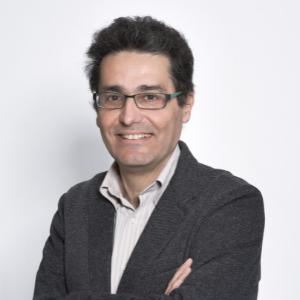ALS, or amyotrophic lateral sclerosis, is a neurodegenerative disease that selectively affects motor neurons, i.e. the cells of the nervous system that control the movements of our muscles, also known in Italy as "the disease of soccer players", given the unusually high number of athletes who are (and have been) affected.
The disease, the causes of which are still being studied, usually affects adults, with an average age of onset at 60-65 years; to date there are about 6,000 sick people in Italy. What is the pathology manifestation? Why does it seem to affect sportspeople? What is research doing and what are the future prospects for treatment?
Let's try to answer on the occasion of the World Day on ALS, promoted by the International Alliance of ALS/MND Associations, which is celebrated every year on June 21st, the first day of spring: a non-random date, which expresses light, rebirth and change towards a greater understanding of the disease and the search for new effective treatments.
.jpg?width=800&name=Giornata_mondiale_SLA_ricerca_UniSR%20(1).jpg)
What is ALS?
ALS, or amyotrophic lateral sclerosis, is a neurodegenerative disease that selectively affects motor neurons, the cells of the nervous system that control the movements of our muscles, which are necessary for walking, manipulating objects, speaking, swallowing and breathing. The mechanisms that lead to motor neuron degeneration are complex, and also involve several cells of the central nervous system such as those of the glia and inflammatory cells.
Due to multiple genetic and/or environmental risk factors, imbalances are created in the mechanisms of neuronal clearance, which lead to the formation of abnormal intracellular protein deposits and therefore to the death of motor neurons. This causes symptoms to develop, which include progressive loss of strength (in the limbs or phonatory and respiratory muscles), stiffness, muscle fasciculations, respiratory failure. Precisely by virtue of the relative selectivity for motor neurons, in patients with ALS classically no sensory symptoms are observed (such as, for example, tingling or reduced tactile sensitivity).
.png?width=800&name=ALS_MND_research_San_Raffaele_University%20(1).png)
Especially in Italy it is known as "the soccer players' disease": why is that?
ALS is also known as "Lou Gehrig's disease", from the name of the famous American baseball player who was affected, a name later declined in Italy with "soccer players' disease". In general, the practice of sporting activity, especially if at an intensive or competitive level and for a prolonged time, has been associated with an increased (albeit moderately) risk of developing ALS.
On the basis of Italian epidemiological studies carried out on the data of the last 50 years, an increase in the risk for professional footballers in A or B Series has been hypothesized, possibly in relation to the continuous microtraumas associated with this activity, if practiced at a competitive level [1, 2]. However, further studies are needed to confirm and better understand the significance of these data.
What is research doing? What are the current treatments and future prospects?
As already mentioned, ALS is a complex disease, with multiple mechanisms at play that lead to motor neuron degeneration. At present, only one drug, Riluzole, has been approved for clinical use in Italy, having shown utility in reducing the rate of disease progression. However, the effectiveness of this drug therapy is not yet satisfactory, and for this reason research is focusing on several fronts, also by virtue of the important steps forward made in recent years in understanding the pathophysiological basis of the disease.
.jpg?width=800&name=ALS_MND_research_San_Raffaele_University%20(3).jpg)
In fact, promising clinical trials are underway with different pharmacological approaches aimed at counteracting the various mechanisms that lead to the premature degeneration of motor neurons. In particular, some studies are active aimed at preventing the accumulation or elimination of toxic aggregates within the cell. Equally promising studies are also underway that use molecules active in the prevention and modulation of neuro-inflammation processes as well as innovative gene therapy approaches, which may also allow a personalized approach to therapy. Many of the results of these studies will be available in the near future and will shed light on the eventual and hoped-for efficacy of these new therapeutic approaches.
References
- Chiò A, Benzi G, Dossena M, Mutani R, Mora G. Severely increased risk of amyotrophic lateral sclerosis among Italian professional football players. Brain. 2005 Mar;128(Pt 3):472-6. doi: 10.1093/brain/awh373. Epub 2005 Jan 5. PMID: 15634730
- Chiò A, Calvo A, Dossena M, Ghiglione P, Mutani R, Mora G. ALS in Italian professional soccer players: the risk is still present and could be soccer-specific. Amyotroph Lateral Scler. 2009 Aug;10(4):205-9. doi: 10.1080/17482960902721634. PMID: 19267274.
.png)

.jpg?width=800&name=Giornata_mondiale_SLA_ricerca_UniSR%20(1).jpg)
.png?width=800&name=ALS_MND_research_San_Raffaele_University%20(1).png)
.jpg?width=800&name=ALS_MND_research_San_Raffaele_University%20(3).jpg)